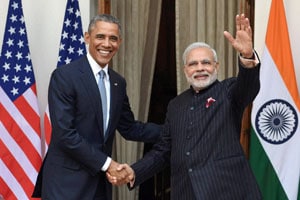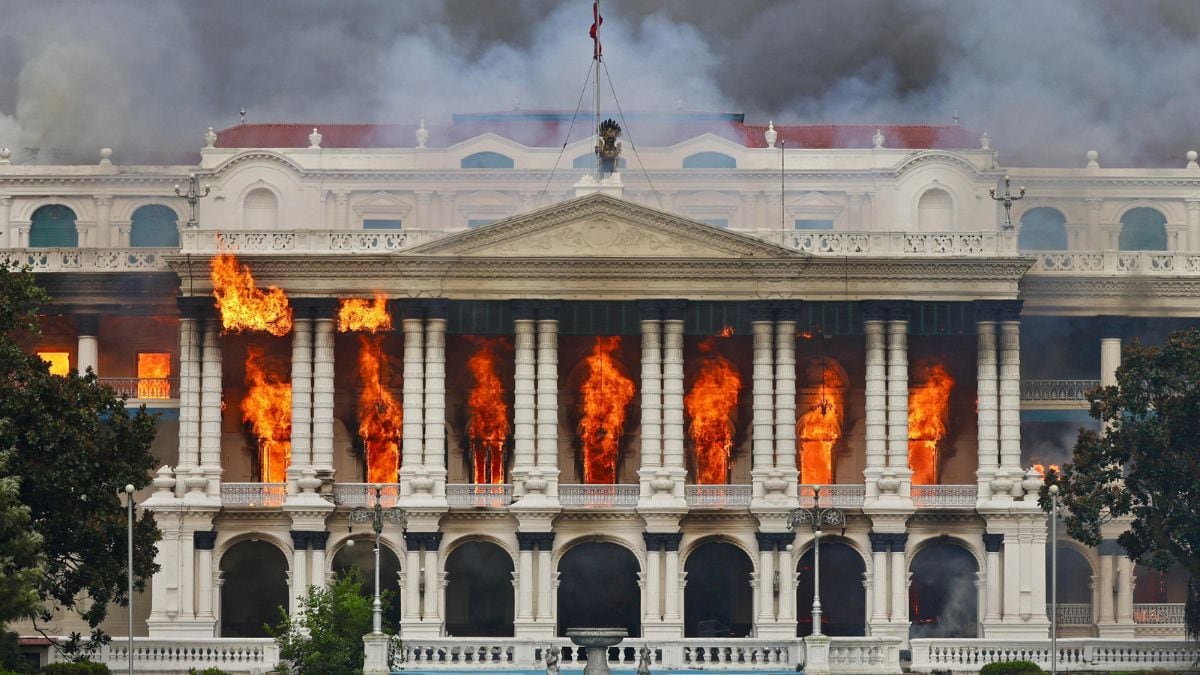The broad road map for future strategic cooperation set out by the Obama-Modi joint statement is welcome and necessary. However, India must be very careful not to do this at the cost of its relationship with China. The sheer economic clout of China cannot be wished away easily. [caption id=“attachment_2070659” align=“alignleft” width=“300”]  Reuters[/caption] India must not forget the fact the America and China have a very deep economic relationship, making them totally inter-dependent. Obama said in his address to the CEOs in New Delhi that America had annual trade of $550 billion with China compared to just $100 billion with India. Clearly the US has a much deeper trade and economic relations with China. China has $ 4 trillion of foreign exchange reserves and over 70% of this is invested in American government bonds. This essentially means United States government had borrowed $ 3 trillion from China. The amount US government has borrowed from Chinese Central Bank is more than India’s entire GDP of $2 trillion! So one logical conclusion is – The US is unlikely to go to war with a country from whose government it has borrowed nearly $ 3 trillion. At worst the United States will try to keep China in check by propping other emergent powers. This is as far as it might go. India must understand this dynamic and therefore should not do anything that might cause lasting friction with China. Also, one must not forget it was the same Barack Obama who visited China immediately after coming to power in 2009 and talked about US and China sharing responsibility to provide security and stability in Asia. That statement had triggered speculation about a new G-2 formation, with America and China working together on global governance. Now America is talking about a multilateral security framework in the Indo-Pacific region, involving India, Japan and Australia. What is the guarantee that the next US President, whoever it is, again attempts to do a deal with China, like Obama tried in 2009? India must be mindful of this because the US-China relationship is very complex as there is too much economic inter-dependence for it to follow any linear course. Which is why China has described the outcome of a Modi-Obama talks as superficial. Because China has the confidence that if there is an intrusion by Chinese military on the Indo-China border, America won’t intervene. India needs to internalise this. So India must strike a good balance in its engagement with both the US and China. The Obama-Modi talks were good and have produced some fruitful outcomes. But one need not make excessive claims of long term breakthroughs. Obama himself said things will not change overnight and the two governments will have work closely at a higher official level to make things happen. From the joint statements of Modi and Obama one is quite optimistic about the engagement between India and US on green trade and investment. It appears India and US are moving towards a framework of cooperation on green energy which could actually translate in the near future into a bilateral treaty of the kind the US had entered into with China some months ago. A strong hint of this came when Obama said the bulk of poor Indians who consume little or no fossil fuel could possibly leap frog to green sources of energy, particularly in rural India. The US could agree to transfer of funds and technology to make these energy sources cheaper for the bottom 600 million Indians who have very little access to fossil fuel today. Obama believes this section could leap frog to avoid the “dirty technology”. In practical terms it seems Modi is far more keen on working with the US on solar energy and shale gas because operationalising nuclear power deals with the American companies will be very difficult from the cost and safety standpoint. The fineprint of the “understanding” to reach and agreement between India and US on civil nuclear deal is still not known. All we know is the Indian government will give a legal undertaking to the US that the American equipment supplier would be insulated from any future class action suit by the victims of an accident in a nuclear power plant. Many experts believe this may be open to legal challenge as Clause 46 of the Nuclear Liability Act, fully supported by BJP in Parliament, does give recourse to the victims to exercise the Tort law. Danny Rodericks, the CEO of leading US nuclear power company, Westinghouse, has publicly stated he cannot commit anything before seeing the fine print of the “understanding” reached between India and US. Interestingly, even L&T, a domestic company looking at working on nuclear power has said it cannot say anything before seeing the fine print. It appears that the actual commercialisation of a Indo-US nuclear partnership cannot happen as long as Clause 46 exists, under which victims have rights to launch class action suits against foreign suppliers. Mind you BJP had also pushed for this clause in Parliament. So BJP will have a tough time diluting Clause 46. China too is diversifying its energy basket and moving rapidly toward greater focus on green energy. It has committed to peaking its carbon emissions by 2030 in its bilateral agreement with the US. India will have to devise its own internal roadmap for the same. Developing a green economy could create a competitive advantage for economies in the 21st century. In this context, India is on the right track in its interaction with US. But again all these would become possible only if India eventually agrees to sign a broader package deal with the US which involves addressing the latter’s concerns on our laws and policies relating to Intellectual Property Rights, Banking, Insurance, multi brand retail etc. India cannot choose what it wants from this package and reject what the United States demands. Mere chemistry between two leaders fade away when hard politics and national interests play out. Author is Executive Editor at Amar Ujala Publications
The broad road map for future strategic cooperation set out by the Obama-Modi joint statement is welcome and necessary. However, India must be very careful not to do this at the cost of its relationship with China.
Advertisement
End of Article


)

)
)
)
)
)
)
)
)



